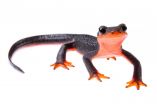(Press-News.org) Athens, Ga. - An international team of researchers led by scientists at the University of Georgia has discovered how parasitic plants, which steal their nutrients from another living plant, evolved the ability to detect and attack their hosts. Their findings, published recently in the journal Science, could lead to new techniques to control the thieving weeds.
There are thousands of parasitic plant species, but the most burdensome for humans are those that infiltrate farmland and destroy crops. Parasite infestations reduce crop yields by billions of dollars each year, particularly in developing nations where access to advanced herbicides and other control methods is limited, according to the researchers.
"In the simplest terms, these are plants that eat other plants," said David Nelson, co-author of the paper and assistant professor of genetics in UGA's Franklin College of Arts and Sciences. "The seeds of some parasitic plants, like witchweed for example, can lie dormant in soil for more than a decade, waiting to grow until they detect the presence of a host. We wanted to understand how the parasites know other plants are nearby so we could develop new ways of combating them."
As plant roots grow, they release hormones called strigolactones into the soil. This is a signal that normally helps fungi form a beneficial connection to the plant, in which they each trade nutrients. But the seeds of parasitic plants also possess the ability to sense strigolactones, which prompt them to germinate, attach to the host root and syphon off nutrients.
"It's kind of like root radar," said Nelson, who is also a member of UGA's Plant Center. "But the incredible thing is that this strigolactone detection system seems to have evolved from plant genes that normally control a seed's ability to detect fire."
When a forest burns, compounds in the smoke and ash leach into the soil. Many plants have evolved the ability to detect these compounds, which signal that their competition--large shady trees or dense ground cover--has been destroyed and it might be an opportune time to grow.
Nelson and his colleagues found that during the evolution of parasitic plants, the smoke detector gene duplicated and some copies switched to become strigolactone detectors. This critical switch is what allows the parasites to recognize and attack nearby hosts.
"Now that we understand the fundamental genetics that give parasitic plants this ability, we can develop new ways to help farmers fight them," Nelson said.
Researchers may, for example, develop synthetic compounds that interfere with the receptors that parasitic plants use to sense strigolactones, making them blind to the presence of a host.
Or, it might be possible to create chemicals that mimic strigolactones. If these were sprayed over a field prior to the normal growing season, farmers could trick the parasitic plants by making them grow when there are no hosts present, a strategy known as suicidal germination.
Ultimately, the researchers hope that their discovery can serve as the foundation for an easy and affordable treatment that farmers in developing countries can use to boost their food production.
"The process that parasitic plants use to sense their hosts has been a mystery in our field for more than 50 years," Nelson said. "This could open the doors to a lot of useful new technologies to help those in greatest need."
INFORMATION:
Other researchers involved in the study include Charles Bond, University of Western Australia; Ken Shirasu, RIKEN; and Jim Westwood, Virginia Polytechnic Institute and State University.
In cells with latent HIV infection, the virus is dormant, and such cells are therefore not attacked by the immune system or by standard antiretroviral therapy. To eradicate the virus from the human body and truly cure a patient, reservoirs of latently infected cells need to be activated and eliminated "the so-called "kick-and-kill" approach. Two studies published on July 30th in PLOS Pathogens report encouraging results on the use of a combination of several drugs to efficiently reactivate HIV in cells with latent infection.
Please contact plospathogens@plos.org if you ...
A deadly fungus identified in 2013 could devastate native salamander populations in North America unless U.S. officials make an immediate effort to halt salamander importation, according to an urgent new report published today in the journal Science.
San Francisco State University biologist Vance Vredenburg, his graduate student Tiffany Yap and their colleagues at the University of California, Berkeley and the University of California, Los Angeles say the southeastern United States (particularly the southern extent of the Appalachian Mountain range and its southern neighboring ...
Scientists at Columbia University's Mailman School of Public Health and the School of Public Health of Li Ka Shing Faculty of Medicine at the University of Hong Kong have shown for the first time that it is possible to predict the timing and intensity of influenza outbreaks in subtropical climates like Hong Kong where flu seasons can occur at different times and more than once during a year. Results appear online in the journal PLOS Computational Biology.
Since the 2013-2014 season, the Mailman School scientists have published weekly regional flu forecasts for over 100 ...
Worldwide, influenza kills an estimated 250,000 to 500,000 people each year. A new study publishing in PLOS Computational Biology has shown that for the first time it is possible to predict the timing and intensity of influenza outbreaks in subtropical climates, such as Hong Kong, where flu seasons can occur at irregular intervals year-round.
The team of scientists from Columbia University's Mailman School of Public Health and the University of Hong Kong used data from a network of 50 outpatient clinics and laboratory reports in Hong Kong from 1998 to 2013 as a test case ...
This news release is available in Japanese.
During the first ever landing of a probe on a comet, the world held its breath as Philae survived a bouncy landing on comet 67P/Churyumov-Gerasimenko on November 12, 2014. This special issue of Science highlights seven new studies that delve further into the data that has been transmitted back by Philae. In a detailed account, Jens Biele et al. describe the critical moments where Philae descends on 67P, only to bounce off the soft, intended landing area and finally settle on a harder surface farther away. Analysis ...
This news release is available in Japanese.
By studying how water striders jump on water, Je-Sung Koh and colleagues have created a robot that can successfully launch itself from the surface of water. As the team watched the water strider jump on water surfaces using high-speed cameras, they noticed that the long legs accelerate gradually, so that the water surface doesn't retreat too quickly and lose contact with the legs. Using a theoretical model of a flexible cylinder floating on liquid, the authors found that the maximum force of the water striders' legs is always ...
This news release is available in Japanese.
The international pet trade threatens to spread a deadly fungal infection to North America's rich wild salamander population and must be frozen, according to the authors of this Policy Forum. Batrachochytrium salamandrivorans (Bsal) is a highly virulent, often fatal fungus that infects salamanders, and there is no effective way to control it after it infects a wild population, say Tiffany Yap and colleagues. It is theorized that Bsal started in Asia and spread to wild European salamanders via the international pet ...
SAN FRANCISCO, CA - July 30, 2015 - A study released today at the Society of NeuroInterventional Surgery 12th Annual Meeting in San Francisco, California, indicates that strict adherence to two commonly-used tools to weigh the risk of treating unruptured aneurysms may not prevent the majority of morbidity-mortality outcomes associated with ruptured intracranial aneurysms. Thus, the International Study of Unruptured Intracranial Aneurysms (ISUIA) criteria and the PHASES score require additional research to determine their effectiveness.
Published in 2003, the ISUIA study ...
Boston, MA -- New research from Harvard T.H. Chan School of Public Health describes a molecular mechanism that helps explain how obesity-related inflammation can lead to type 2 diabetes. The findings describe a surprising connection between two molecular processes that are known to be involved in the development of metabolic disease--inflammation and endoplasmic reticulum (ER) dysfunction--and suggest that targeting this connection could aid in the development of new therapies.
The study will be published in the July 31, 2015 issue of Science.
Specifically, the researchers ...
Scientists have long worked to understand how crystals grow into complex shapes. Crystals are important in materials from skeletons and shells to soils and semiconductor materials, but much is unknown about how they form.
Now, an international group of researchers has shown how nature uses a variety of pathways to grow crystals that go beyond the classical, one-atom-at-a-time route.
The findings, published today (Thursday, July 30) in Science, have implications for decades-old questions in science and technology regarding how animals and plants grow minerals into shapes ...




